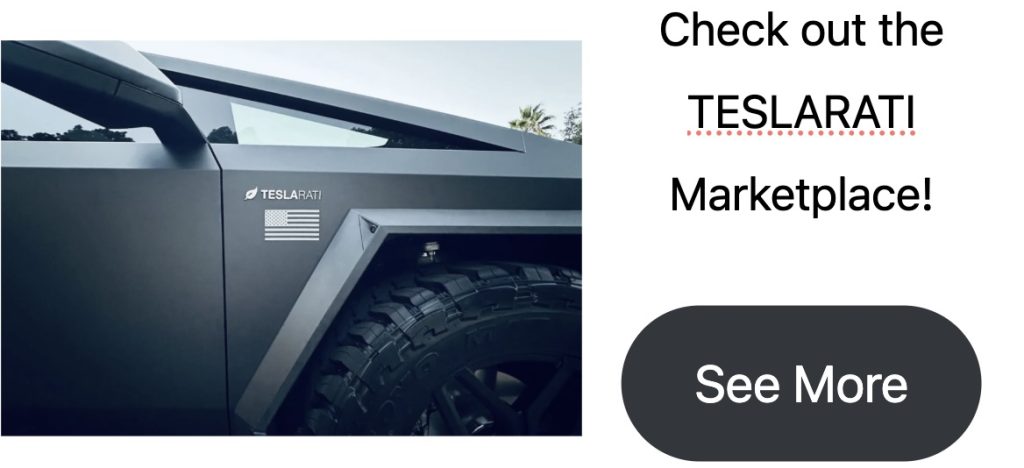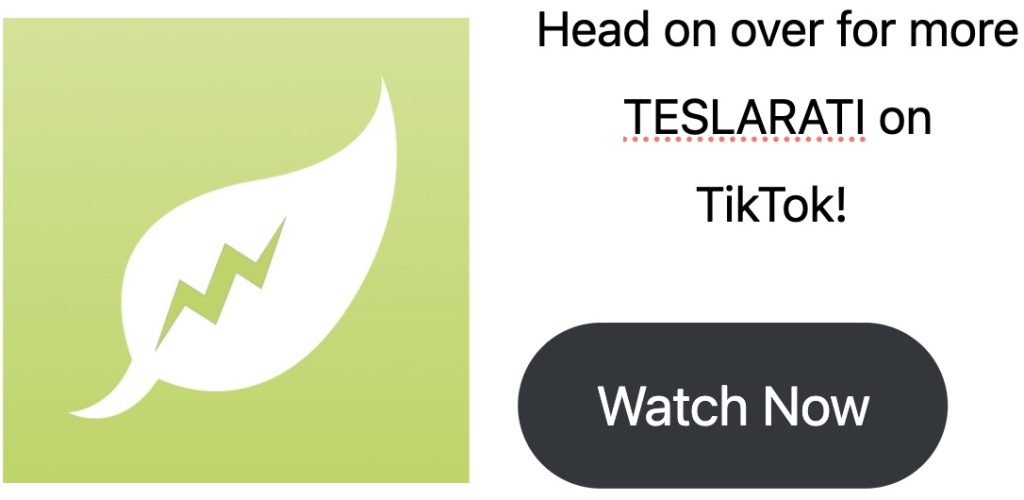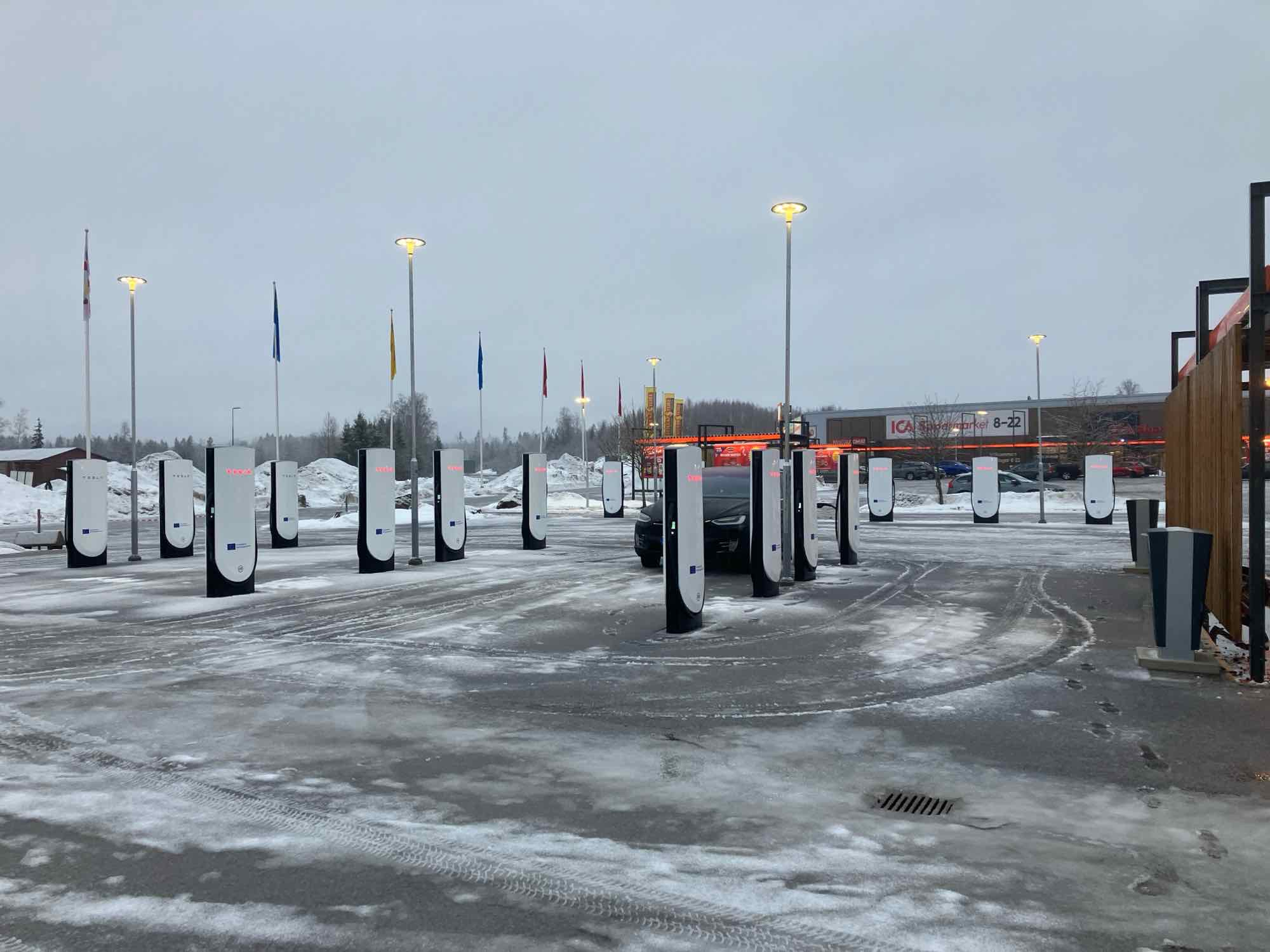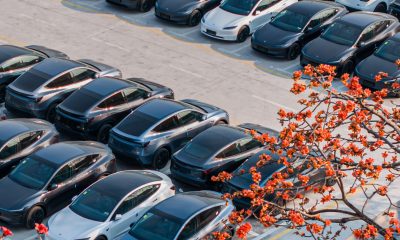Tesla Sweden recently took a stand against union IF Metall using its Superchargers.
Tesla Sweden highlighted just how much the union’s actions and protests are inconveniencing everyone—even drivers outside the electric vehicle maker.
Tesla Sweden vs IF Metall
- IF Metall’s strike against Tesla Sween has been going on for over a year now.
- The EV maker is not just in conflict with IF Metall either, as other unions have implemented sympathy strikes to disrupt Tesla Sweden’s operations.
- As a result of these sympathy strikes, some Supercharger stations that have been built by Tesla remain inactive even if the sites themselves are completed.
- This was because some employees of companies responsible for connecting the Superchargers to the grid are forbidden from working with Tesla due to their collective agreements.
- There are currently five new, completed Supercharger stations with 72 stalls that remain inactive across the country.
Ready for Connection – But When?
A single Supercharger in Sweden helps avoid approximately 60,000 kg of CO2 emissions annually.
Today, there are more than 1,200 Superchargers across Sweden, and Tesla is eager to continue expanding the network to ensure smoother and more… https://t.co/G2izdxq9ij pic.twitter.com/EqT5rRpGiU— Nicklas ???T??♻️? (@NicklasNilsso14) December 20, 2024
Tesla Sweden’s jab
- In what appears to be a jab against IF Metall and its allies, Tesla opted to post a clear message on its completed but inactive Superchargers.
- “Here, all EV drivers could charge for emission-free travel, contributing to a sustainable Sweden,” Tesla wrote on its inactive Supercharger sites. The fact that the Superchargers are “Ready to Connect” was also highlighted.
- Other Tesla Superchargers featured a message stating that one Supercharger in Sweden helps avoid approximately 60,000 kg of CO2 emissions annually.
- Tesla also included a graphic of the company’s hedgehog mascot, which was wearing a vest that stated, “Thanks, I’m good.” The vest was worn by Tesla Sweden employees who did not participate in the union’s protests against the electric vehicle maker.
We're ready to turn on 72 Supercharger stalls for the holidays for all Swedish EV drivers. Superchargers are the most affordable charging, support all EVs, and are critical infrastructure to support peak travel days. Important for EV adoption in Sweden that current & future… https://t.co/fapfkHH3sp— Max de Zegher (@MdeZegher) December 20, 2024
A potential Tesla lifeline
- The refusal of local energy companies to connect Tesla’s completed Superchargers is reportedly under investigation by the Swedish Energy Markets Inspectorate, as noted in a report from Allt Om Elbil.
- As noted by the publication, local energy companies typically only deny the connections of installations like EV charging stations due to issues like lack of network capacity or other “specific reasons.”
- It then remains to be seen if IF Metall’s protests against Tesla qualify as valid “specific reasons.”
- The investigation is expected to be completed by spring 2025.
Between December to March, Ljusdal, located in central Sweden records over 1600 charging sessions per month, enabling emission free travel for drivers during the skiing season just off route 84. During this busy period, drivers often experience ques & last year, over 300 vehicles… pic.twitter.com/7iClQ0CT4V— Oliver Dodd (@Olliedodd) December 21, 2024
What they’re saying:
- Jerker Sidén, an analyst at the Energy Markets Inspectorate, shared some insights about the matter.
- “That’s what we are investigating. Historically, we haven’t had many cases about denied connections. This is what we’re assessing now,” the analyst noted.
- Tesla Director of Charging Max de Zegher also shared his thoughts on the matter in a post on X.
- “We’re ready to turn on 72 Supercharger stalls for the holidays for all Swedish EV drivers. Superchargers are the most affordable charging, support all EVs, and are critical infrastructure to support peak travel days. Important for EV adoption in Sweden that current & future Superchargers get energized asap by utilities currently blocking us from opening them,” the Tesla executive wrote.


Don’t hesitate to contact us with news tips. Just send a message to simon@teslarati.com to give us a heads up.
News
Stellantis unveils solid-state battery for EVs
Stellantis validated solid state battery cells for EVs: ultra-dense, fast-charging, and AI-optimized. Launching demo fleet by 2026.

Stellantis N.V. and Factorial Energy have validated Factorial’s automotive-sized FEST® solid-state battery cells, a major milestone for next-generation electric vehicle (EV) batteries. The breakthrough positions Stellantis and Factorial to advance EV performance with lighter, more efficient batteries.
“Reaching this level of performance reflects the strengths of our collaboration with Factorial.
“This breakthrough puts us at the forefront of the solid-state revolution, but we are not stopping there. We continue working together to push the boundaries and deliver even more advanced solutions, bringing us closer to lighter, more efficient batteries that reduce costs for our customers,” said Ned Curic, Stellanti’s Chief Engineering and Technology Officer.
The 77Ah FEST® cells achieved an energy density of 375Wh/kg, supporting over 600 cycles toward automotive qualification. Unlike lithium-ion batteries, these solid-state cells charge from 15% to over 90% in 18 minutes at room temperature and deliver high power with discharge rates up to 4C. Factorial’s AI-driven electrolyte formulation enables performance in temperatures from -30°C to 45°C (-22°F to 113°F), overcoming previous solid-state limitations.
“Battery development is about compromise. While optimizing one feature is simple, balancing high energy density, cycle life, fast charging, and safety in an automotive-sized battery with OEM validation is a breakthrough,” said Siyu Huang, CEO of Factorial Energy. “This achievement with Stellantis is bringing next-generation battery technology from research to reality.”
The collaboration optimizes battery pack design for reduced weight and improved efficiency, enhancing vehicle range and affordability. Stellantis invested $75 million in Factorial in 2021 and plans to integrate these batteries into a demonstration fleet by 2026. This fleet will validate the technology’s real-world performance, a critical step toward commercialization.
The milestone aligns with Stellantis’ push for sustainable EV solutions, leveraging Factorial’s disruptive technology to meet the rising demand for high-performance batteries. As the companies refine pack architecture, the validated cells promise faster charging and greater efficiency, potentially reshaping the EV market. With the demonstration fleet on the horizon, Stellantis and Factorial are poised to lead the solid-state battery push, delivering cost-effective, high-range EVs to consumers.
News
Tesla China vehicle registrations rise 51% in April’s fourth week
In the week ending April 27, Tesla China saw 10,300 new vehicle registrations.

Tesla China’s new vehicle registrations saw a notable rise in the week of April 21-27, 2025. Over the week, the electric vehicle maker’s registrations saw an impressive 51% week-over-week rise, suggesting that domestic vehicle deliveries are on the rise once more.
Tesla China Results
In the week ending April 27, Tesla China saw 10,300 new vehicle registrations. This represents a notable rise from the company’s registration numbers in the past weeks of April. For context, Tesla China saw 3,600 registrations in the week ending April 6, 5,400 registrations in the week ending April 13, and 6,780 registrations in the week ending April 20, 2025.
Considering that April is the first month of the second quarter, expectations were high that Tesla China was allocating Giga Shanghai’s output for vehicle exports. With 10,300 registrations in the week ending April 27, however, it would appear that the company’s domestic deliveries are picking up once more.
Tesla China does not report its weekly sales figures, though a general idea of the company’s overall perforce in the domestic auto sector can be inferred through new vehicle registrations. Fortunately, these registrations are closely tracked by industry watchers, as well as some local automakers like Li Auto.
Tesla Model 3 and Model Y in Focus
Tesla China produces the Model Y and Model 3 in Giga Shanghai. Both vehicles are also exported from China to foreign territories. As per industry watchers, it would appear that both the Model 3 and Model Y saw an increase in registrations in the week ending April 27.
The Model 3, for one, appears to have seen 3,200 registrations in the week ending April 27, a 14% increase from the 2,800 that were registered in the week ending April 20. For context, Tesla China saw just 1,500 new Model 3 registrations in the week ending April 13 and 1,040 registrations in the week ending April 6.
The Model Y, on the other hand, saw 7,100 registrations in the week ending April 27. That’s a 77.5% increase from the 4,000 that were registered in the week ending April 20. Tesla also saw 3,900 registrations in the week ending April 13, and 2,540 registrations in the week ending April 6, 2025.
News
Volkswagen teams with Uber for robotaxi service with the ID. Buzz
Volkswagen and Uber team up to launch a driverless ID. Buzz robotaxi fleet in U.S. cities. Testing starts in LA this year.

Volkswagen of America and Uber unveiled a plan to launch a commercial robotaxi service using autonomous electric ID. Buzz vehicles across U.S. cities over the next decade. The partnership marks a significant step for Volkswagen’s autonomous vehicle ambitions, leveraging Uber’s ride-hailing expertise.
The service will debut in Los Angeles by late 2026, with human safety operators initially overseeing the fleet before transitioning to fully driverless operations in 2027. Volkswagen ADMT, the German automaker’s autonomous subsidiary, will begin testing in Los Angeles later this year upon securing a testing permit from the California Department of Motor Vehicles. The California Public Utilities Commission will oversee permits for the commercial ride-hailing phase.
“Volkswagen is not just a car manufacturer — we are shaping the future of mobility, and our collaboration with Uber accelerates that vision,” said Christian Senger, CEO of Volkswagen Autonomous Mobility. “What really sets us apart is our ability to combine the best of both worlds–high-volume manufacturing expertise with cutting-edge technology and a deep understanding of urban mobility needs.”
The Trump administration’s recent policy shift, announced last Thursday by Transportation Secretary Sean Duffy, supports initiatives like VW and Uber’s partnerships by easing federal safety rules and crash reporting requirements on autonomous vehicle development. According to Duffy, the United States government wants to outpace Chinese competitors in autonomous vehicle development.
Volkswagen ADMT, which launched publicly in July 2023, has been testing 10 ID. Buzz vehicles equipped with Mobileye’s autonomous technology in Austin, reported TechCrunch. Two years ago, Volkswagen focused on selling self-driving vans and fleet management software rather than building its own ride-hailing service. VW’s strategy toward autonomous vehicles appears to have shifted, as reflected in its Uber partnership.
Uber will strengthen its autonomous vehicle portfolio through its partnership with Volkswagen. The ride-hailing service company has secured deals with over 14 firms, including Waymo in Austin and a forthcoming launch in Atlanta.
The Volkswagen-Uber collaboration positions both companies to capitalize on the growing robotaxi market. With testing imminent and regulatory support increasing, the ID. Buzz fleet could redefine urban mobility, blending Volkswagen’s manufacturing prowess with Uber’s ride-hailing network to compete in the evolving autonomous vehicle landscape.
-

 News1 week ago
News1 week agoTesla’s Hollywood Diner is finally getting close to opening
-

 Elon Musk2 weeks ago
Elon Musk2 weeks agoTesla doubles down on Robotaxi launch date, putting a big bet on its timeline
-

 News4 days ago
News4 days agoTesla is trying to make a statement with its Q2 delivery numbers
-

 News2 weeks ago
News2 weeks agoTesla’s top investor questions ahead of the Q1 2025 earnings call
-

 News2 weeks ago
News2 weeks agoUnderrated Tesla safety feature recognized by China Automotive Research Institute
-

 News2 weeks ago
News2 weeks agoTesla reveals its Q1 Supercharger voting winners, opens next round
-

 News2 weeks ago
News2 weeks agoTesla police fleet saves nearly half a million in upkeep and repair costs
-

 Investor's Corner7 days ago
Investor's Corner7 days agoLIVE BLOG: Tesla (TSLA) Q1 2025 Company Update and earnings call





















